 W
WThe Abdul Rahman Mosque, also known as the Grand Mosque of Kabul, is one of the largest mosques in Afghanistan. It is located in one of Kabul's central commercial areas called Deh Afghanan, near the Pashtunistan Square, Zarnegar Park, and across the once popular Plaza Hotel. The building is three stories high, built on 3.5 acres of land. One floor of the building is dedicated to women only.
 W
WThe Afghanistan Institute of Higher Education is a higher education institute in Kabul, Afghanistan.
 W
WAfghanistan Technical Vocational Institute (ATVI) also known as ATVI, is a technical vocational institute in Afghanistan. ATVI is to provide market oriented technical and vocational training opportunities for Afghan youth
 W
WThe Afghanistan–Uzbekistan Friendship Bridge is a road and rail bridge across the river Amu Darya, connecting the town of Hairatan in the northern Balkh province of Afghanistan with Termez in the Surxondaryo Region of Uzbekistan. The bridge was built by the Soviet Union and opened in 1982 to supply its troops in Afghanistan.
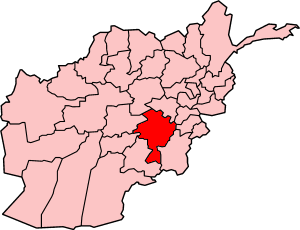 W
WThe Sultan Dam or Band-e Sultan is a dam located on the Ghazni River in the Ghazni Province of Afghanistan. As of April 2013, the dam is just used for irrigating 15,000 hectares of land. It is believed to have the potential to meet electricity needs of 50,000 families. The dam has importance for residents of Ghazni and neighboring Maidan Wardak province. It is believed to be first built during the Ghaznavids in the 10th century, in memory of Sultan Mahmud of Ghazni.
 W
WChaghcharan Airport is an airport serving the city of Chaghcharan in Ghor Province, Afghanistan. It is located northeast of the Hari River, one mile east/northeast of Chaghcharan. It has a runway approximately 2,000 metres (6,600 ft) in length, taxi way and apron asphalted and capable of supporting small to medium (C130) sized aircraft. The airport is mostly used by the International Security Assistance Force (ISAF) and the Afghan National Security Forces (ANSF) but there are also regularly scheduled commercial flights as of May, 2014.
 W
WPersian: چهار آسیاب Chahār Aasiāb Char Asiab, Chahar Asiab, Charasiab, Charasiah or Charasia is a town, ca. 7 miles south of Kabul in the Char Asiab District.
 W
WThe Citadel of Ghazni is a large medieval fortress located in Ghazni city, east-central Afghanistan. It was built in the 13th century surrounding the Ghazni town to form a walled city. The 45 metre high citadel dominates the skyline.
 W
WDwyer Airport is a military airport under the control of Marine Expeditionary Brigade, located south west of Lashkargah in southern Afghanistan.
 W
WFarah Airport is a military airport located in Farah, Afghanistan. It is used by the United States Armed Forces the International Security Assistance Force (ISAF) and the Afghan Air Force (AAF). The United States Army Corps of Engineers is developing and expanding the airport, with new facilities being added for the Afghan National Security Forces (ANSF).
 W
WFarah City Hospital is a hospital in Farah, western Afghanistan. The hospital has major significance as the regional hospital of Farah Province. The hospital has treated many people who have been affected by U.S. bombing. Officials from the hospital also have an authoritative stance in healthcare in the province and are often sent to review smaller clinics across the region. In 2010, electricity was installed in the hospital.
 W
WGardez Airport is a public use airport located near Gardez, Paktia, Afghanistan.
 W
WGhazi Stadium is a multi-purpose stadium in eastern Kabul, Afghanistan, mainly used to play football. It is sometimes called by other names such as the Afghan Football Federation Stadium. It was built during the reign of King Amanullah Khan in 1923, who is regarded as Ghazi (Hero) for the Afghan victory in the Third Anglo-Afghan War and gaining independence for his nation after the Anglo-Afghan Treaty of 1919. The stadium has the capacity to house 12,000 people after the installation of seats.
 W
WGhaziabad Airport is a public use airport located near Ghaziabad, Nangarhar, Afghanistan.
 W
WGhazni Airport is located in Ghazni, Afghanistan, next to the main Ghazni-Kandahar Highway. It serves the population of Ghazni and other nearby Afghan provinces. The airport is mainly used for civilian flights and is still being developed as of late 2013.
 W
WGhazni Minarets are two elaborately decorated minaret towers located in Ghazni city, central Afghanistan. They were built in middle of the twelfth century and are the only surviving elements of the mosque of Bahram Shah. The two minarets are 600 meters apart and lie in an open plain, north-east of Ghazni city.
 W
WGhazni University is a public university in Ghazni, a city in central Afghanistan. It was established in 2008 and began with two faculties, the Faculty of Agriculture and the Faculty of Education. The university's first rector was Ahmad Shah Rafiqi. During its inaugural semester, the university had around 110 students. As of 2019, the university has five faculties and enrolls around 4,000 students, 540 of which are women.
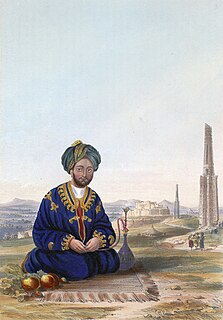 W
WGhulam Haidar Khan High School is an all-boys school located in Khair Khana, Kabul, Afghanistan. The school is named after Afghan Prince Ghulam Haidar Khan, son of Emir Dost Mohammad Khan, who fought against the British forces in the July 1839 Battle of Ghazni during the First Anglo-Afghan War. It has about 10,000 students from seven to twelfth grade in four shifts.
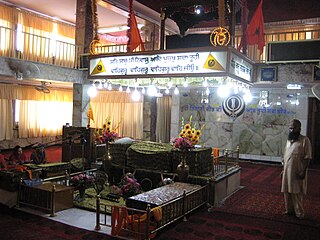 W
WKarte Parwan Gurdwara in the Karte Parwan section of Kabul, Afghanistan, is one of the main Gurdwaras in the region. Gurdawara means the Gateway to the Guru, and is a place of worship for Sikhs.
 W
WHaji Piyada Mosque ḤĀJI PIĀDA or Noh Gonbad Mosque, a Samanid-style building in Balkh province of northern Afghanistan. Built in the 9th century, it is thought to be the earliest Islamic building in the country. Carbon dating conducted in early 2017, together with historical sources, suggest it could have been built as early as the year 794. It was built on the remains of a Buddhist monastery.
 W
WKabul was the capital of the great Hindu Shahi kings. Afghanistan was a great center of Vedic culture. There were many Hindu temples in Afghanistan. Some temples in Kabul have survived the recent turmoil.
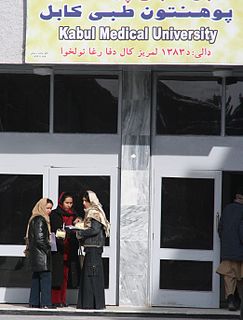 W
WKabul Medical University formerly known as Kabul Medical Institute) is located in Kabul, Afghanistan on the campus of Kabul University. The medical institution was initially maintained by collaboration with the Turkish and French sponsors. KMF developed into a single autonomous University in 2005. It currently graduates professionals in fields of Curative Medicine, Pediatric, Stomatology, Dental and Nursing. All subjects are taught in Dari and Pashto but most medical terms are in English.
 W
WKabul Polytechnic University is the main center of educating engineers in Kabul, Afghanistan. It was founded on 13 October 1963 as Kabul Polytechnic Institute and is located in 72 hectares of land in Karte Mamourin, north-western Kabul. In the opening ceremony government officials from both Afghanistan other countries were present. Since its establishment it has been considered as one of the important entities in providing education and training.
 W
WKabul Serena Hotel is a luxury hotel in downtown Kabul, Afghanistan. It is set in landscaped gardens, overlooking the city's famous Zarnegar Park. Originally built in 1945, the hotel has been completely refurbished and extended in recent years, reopening on November 8, 2005. The main work for the hotel was given to the Aga Khan Foundation and thus it was inaugurated by Aga Khan IV It has been the target of terrorist attacks in January 2008 and in March 2014.
 W
WKhost Airport is located next to the city of Khost in eastern Afghanistan. It has been used historically for military purposes only but in recent years it was developed and expanded to be used also for commercial flights.
 W
WThe Great Mosque of Khost or simply the Khost Mosque is the largest mosque in the city of Khost, in eastern Afghanistan. It can hold up to 2,000 worshipers during any prayer.
 W
WLashkargah Mosque is a mosque in the city of Lashkargah, in Helmand province of south-western Afghanistan.
 W
WMaymana Airport is a public use airport located near Maymana, Faryab, Afghanistan.
 W
WMuqur Airport is a public use airport located near Muqur, Ghazni, Afghanistan.
 W
WNili Airport is a military and public use airport located in Nili, Daykundi Province, Afghanistan. It was rebuilt in recent years with support from the International Security Assistance Force (ISAF), and is mainly used by ISAF and the Afghan Air Force for military purposes or delivering emergency aid to people in the area.
 W
WLocated in Kabul, Afghanistan, the OMAR Mine Museum contains a collection of 51 types of land mines out of the 53 used in Afghanistan over the years. OMAR is an acronym for the Organization for Mine Clearance and Afghan Rehabilitation. The collection includes unexploded ordnance, cluster bombs and airdrop bombs used by the War in Afghanistan. The museum educates school groups to detect and avoid unexploded ordnance including landmines and cluster bomblets from historic and ongoing Afghan wars. The museum was seriously damaged in a July 1, 2019 attack.
 W
WPanjab Airport is a public use airport located near Panjab, Bamyan, Afghanistan.
 W
WParwan University is located in Charikar, capital of Parwan province, central Afghanistan. It was established in 2006. Parwan university has faculties of Economics, Agriculture and Education.
 W
WPul-e Khishti Mosque is the largest mosque in Kabul, Afghanistan. Located in the center of old Kabul, the Pul-e Khishti Mosque can be identified by its large blue dome. The mosque originally was erected in the late 18th Century, but largely rebuilt under Zahir Shah in the late 1960s. It was damaged during fighting in the 1990s, but is one of the few buildings in the area which has had restoration work done on it.
 W
WQala-i-Jangi is a 19th-century fortress located near Mazar-i-Sharif in northern Afghanistan. It is known for being the site of a bloody 2001 Taliban uprising named the Battle of Qala-i-Jangi, in which at least 470 people were killed, including CIA agent Johnny "Mike" Spann. It served as Northern Alliance General Abdul Rashid Dostum's military garrison during the opening stages of the War in Afghanistan (2001–present).
 W
WQala i Naw Airport is a small airport serving the city of Qala i Naw in Badghis Province, Afghanistan. It is also known as Qala Nau Airport. It previously had scheduled services with the now defunct Pamir Airways. This airport is unique in the fact that the runway was originally a highway utilized when there was no air traffic. When aircraft arrived, Spanish soldiers of the International Security Assistance Force (ISAF) closed down the highway and it becomes a runway. The runway lies adjacent to the site of a former Spanish forward operating base (FOB), now transferred to the Afghan government. The airport is mainly used for military purposes, including by the Afghan Air Force (AAF). Qala e Naw Airport is located next to Qala i Naw Airport.
 W
WQalat Airport is a military airport under the control of Marine Expeditionary Brigade, located 2 miles north west of the town of Qalat, Afghanistan.
 W
WThe Rahman Baba High School is located in west Kabul, Afghanistan. It was established by the help of Pakistan and is one of the best schools in Kabul Province. It is specially dedicated to the students of rural areas and follows the curriculum of the Ministry of Education of Afghanistan in Pashto language.
 W
WSafi Landmark Hotel is a hotel in Kabul, Afghanistan.
 W
WShah-Do Shamshira Mosque, the name translates to Mosque of the King of Two Swords, is a yellow two-story mosque in Kabul, Afghanistan on Andarabi Road, just off the Kabul River and the Shah-Do Shamshira bridge in the center of the city. It was built during the reign of Amanullah Khan (1919-1929). It was modelled after the Ortaköy Mosque in Istanbul. The design of this mosque is quite unusual for Islamic religious architecture. Its Italian decorative stucco creates an interesting effect that some describe as ‘Afghan Baroque’.
 W
WShahr-e Naw Park is an urban park in the Shahr-e Naw district of Kabul, Afghanistan.
 W
WShaikh Zayed University, also known as Khost University, is a public university in the city of Khost, southeastern Afghanistan. With its original name "Afghan University Peshawar", it was initially established in 2000 in Peshawar. It was shifted to Khost by special orders of the former Afghan President Hamid Karzai. The university was named after Shaikh Zayed bin Sultan Al Nahyan, the first President of the United Arab Emirates, who sponsored the construction of its campus in Khost.
 W
WSharana Air Base is a public use airport located near Sharana, Paktika, Afghanistan.
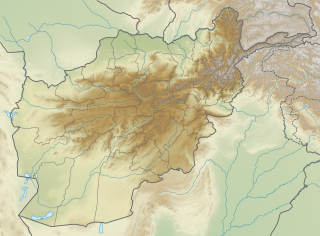 W
WSheberghan Airfield is located in the Jowzjan Province in the northwest part of Afghanistan. The airfield is located in a plain adjacent to a river, 17 nautical miles (31 km) northeast of Sheberghan, 12 nautical miles (22 km) west of Aqchah, and 40 nautical miles (74 km) east of Andkhoy.
 W
WThe Tajik–Afghan bridge at Tem-Demogan was opened on 3 November 2002. It spans the Panj River. It was the first of four bridges planned to be built with the assistance of the Aga Khan Foundation.
 W
WThe Tajikistan-Afghanistan bridge spanning the Panj River between Panji Poyon, Tajikistan and Sherkhan Bandar, Afghanistan was opened on 26 August 2007. The two lane bridge is 672 metres long and 11.6 metres wide. It cost approximately $40 million, financed by the US Army Corps of Engineers and was designed and constructed by an Italian company, Rizzani de Eccher S.p.A. The Tajik President Emomali Rahmon and Afghan President Hamid Karzai were joined by US Secretary of Commerce Carlos Gutierrez at the opening ceremony.
 W
WTaloqan Airport is an airport serving the city of Taloqan in Takhar Province, Afghanistan.
 W
WTaywara Airport is a public use airport located near Taywara, Ghōr, Afghanistan.
 W
WYangi Qaleh Airport is a public use airport located near Yangi Qaleh, Takhar, Afghanistan.
 W
WZarkashan is a mine located approximately 225 km south-west of Kabul in the Ghazni Province, Afghanistan. Ghazni city is approximately 93 km north of the project area. The German Geological survey conducted a reconnaissance survey in the mid-1960s and the Soviets and the Afghanistan Geological Survey (AGS) conducted exploration in the late 1960s and early 1970s. The mine is estimated to contain up to 7500 kilograms of gold.